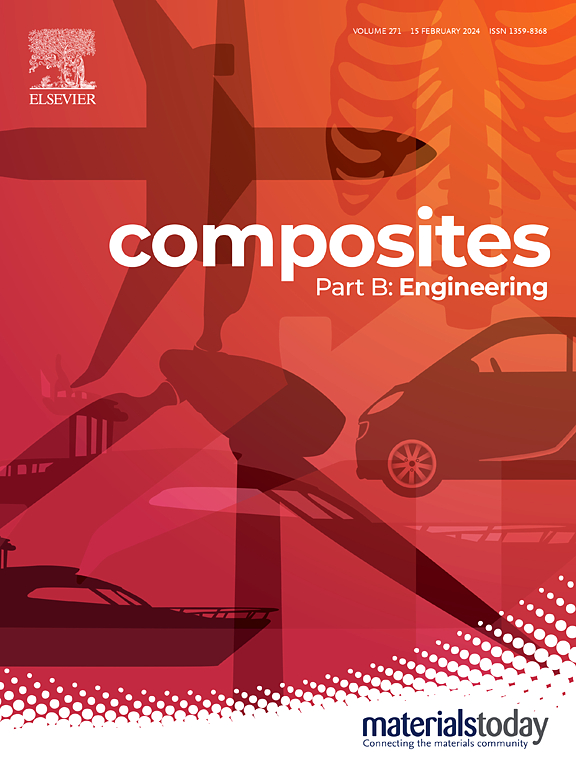Development of self-healing composite membranes with enhanced conductivity for wearable electronics
IF 12.7
1区 材料科学
Q1 ENGINEERING, MULTIDISCIPLINARY
引用次数: 0
Abstract
Flexible and conductive electronics are transforming wearable technologies, yet achieving a balance between high conductivity and self-healing capabilities remains a critical challenge. In this study, we present a conductive self-healing membrane (CSHM) fabricated through electrospinning polyurethane and coated it with liquid metal. This approach integrates mechanical stretchability, electrical conductivity, and self-repair properties into a single material system, addressing key limitations in flexible electronics. The membrane exhibits exceptional performance, with tensile strength recovering to 97 % after 24 h of healing at 40 °C. Its durability is further validated through cyclic tensile tests, where the resistance showed only a slight increase after 10,000 stretching cycles at 100 % strain, indicating excellent electrical stability. The membrane's ability to restore conductivity after damage was confirmed through resistance-time analysis and practical applications, including powering LED circuits.
可穿戴电子产品导电性增强的自修复复合膜的研制
柔性和导电性电子产品正在改变可穿戴技术,但实现高导电性和自愈能力之间的平衡仍然是一个关键挑战。在这项研究中,我们提出了一种导电自愈膜(CSHM),由静电纺丝聚氨酯制成,并在其表面涂上液态金属。这种方法将机械拉伸性、导电性和自我修复特性集成到单一材料系统中,解决了柔性电子产品的关键限制。膜表现出优异的性能,在40°C下愈合24小时后,拉伸强度恢复到97%。通过循环拉伸测试进一步验证了其耐久性,在100%应变下进行10,000次拉伸循环后,电阻仅略有增加,表明具有出色的电气稳定性。通过电阻时间分析和实际应用,包括为LED电路供电,证实了该膜在损坏后恢复导电性的能力。
本文章由计算机程序翻译,如有差异,请以英文原文为准。
求助全文
约1分钟内获得全文
求助全文
来源期刊

Composites Part B: Engineering
工程技术-材料科学:复合
CiteScore
24.40
自引率
11.50%
发文量
784
审稿时长
21 days
期刊介绍:
Composites Part B: Engineering is a journal that publishes impactful research of high quality on composite materials. This research is supported by fundamental mechanics and materials science and engineering approaches. The targeted research can cover a wide range of length scales, ranging from nano to micro and meso, and even to the full product and structure level. The journal specifically focuses on engineering applications that involve high performance composites. These applications can range from low volume and high cost to high volume and low cost composite development.
The main goal of the journal is to provide a platform for the prompt publication of original and high quality research. The emphasis is on design, development, modeling, validation, and manufacturing of engineering details and concepts. The journal welcomes both basic research papers and proposals for review articles. Authors are encouraged to address challenges across various application areas. These areas include, but are not limited to, aerospace, automotive, and other surface transportation. The journal also covers energy-related applications, with a focus on renewable energy. Other application areas include infrastructure, off-shore and maritime projects, health care technology, and recreational products.
 求助内容:
求助内容: 应助结果提醒方式:
应助结果提醒方式:


